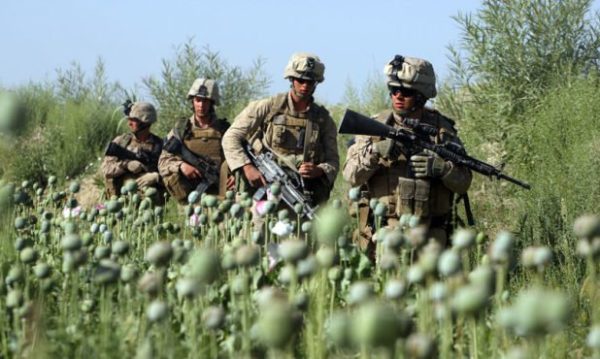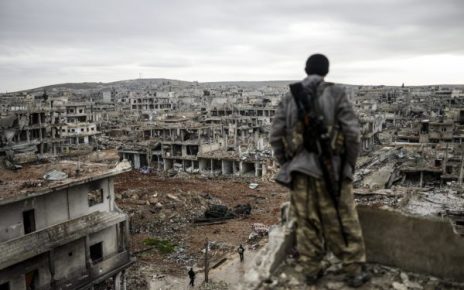The White House is expected to receive a series of new options from the Pentagon this week for the ongoing war in Afghanistan, the longest war in American history, now in its sixteenth year.
The plans vary, but each would deploy between 3,000 and 5,000 additional soldiers to the country, an escalation in line with the administration’s other policies in Iraq, Yemen and Syria.
The planned escalation comes as U.S.-trained Afghan forces continue to lose territory to the Taliban all over the country. By early 2016 the Taliban had taken nearly 65 percent of the Helmand Province, the largest one in the country, and just a few months later had temporarily pushed its way into Lashkar Gah, the provincial capital of Helmand. This has been common in the current phase of the war, with a constant shifting of battle lines as the Taliban takes and loses territory. The insurgent group, however, appears to be making steady gains.
More recently, days of heavy clashes resulted in a Taliban victory over Afghan security forces in the northern province of Kunduz. In an apparent attempt to surround Kunduz city, the Taliban took Qala-e-Zal, a district just west of the city, and soon after launched another assault on the district to its east, Khan Abad. This would not be the first time the group took Kunduz; the Taliban held districts in the city for brief periods in 2015 and 2016.
A partial explanation for the failures of the Afghan military is that a substantial number of its troops are “ghost soldiers,” or fighters who exist only on paper. Local commanders are funded on the basis of how many troops serve under them, and many have not hesitated to fudge numbers in order to receive greater amounts of funding and resources. The same problem persists in Iraq as well.
Another recent victory for the Taliban came in late April, when militants disguised as Afghan troops infiltrated a military base and killed or wounded over 100 soldiers, one of the deadliest insurgent attacks on a military site in the history of the conflict. Some survivors of the assault believe the militants had help from the inside.
“When an attacker enters the base, why was he not challenged? There is not just one barrier or security gate, there are seven or eight,” one of the surviving Afghan soldiers told BBC.
At least ten Taliban fighters were killed in that assault and one militant was captured.
Although after the initial invasion of the country in 2001 the U.S. was able to expel the Taliban from Afghanistan’s capital city, Kabul, the group still maintains a strong presence in the south, where the country shares a border with Pakistan. Many have described that region as “lawless,” as a number of militant groups in addition to the Taliban operate there with relative impunity.
Among the many radical Islamist groups active in the country, the Islamic State has begun to establish a foothold in Afghanistan, giving the United States a new rationale to stay involved in the conflict. Operations against ISIS have already begun, such as the high-profile MOAB strike carried out on a cave complex housing ISIS fighters in Nangarhar Province on Apr. 13.
Just five days before that bombing, on Apr. 8, an American Special Forces soldier was killed in a clash with the Islamic State in the same district of Nangarhar, the first American casualty from enemy fire in Afghanistan this year.
A significant number of U.S. troops were withdrawn from Afghanistan on Dec. 31, 2016, but 8,400 soldiers were left stationed in four garrisons located in Kabul, Kandahar, Bagram and Jalalabad. That holding force, combined with the Afghan military, has not been sufficient to defeat the Taliban; it is not likely an additional 5,000 troops will make much of a difference.
Some 29,000 private Pentagon contractors also operate in the country, just under a quarter of them working as supplemental security personnel.
The U.S. Army announced Thursday it will send 1,500 soldiers from the 82nd Airborne Division to Afghanistan on an advise and assist mission this summer. A spokesman for the division, Lt. Col. Joe Buccino, insisted the deployment did not represent an escalation of the war.
“This deployment represents the normal flow-of-forces into Afghanistan,” Buccino said.
The Afghan central government based in Kabul survives on American largess and appears unable to stand on its own two feet. Once the Americans vacate the country—if that ever happens—it seems inevitable that the Taliban will reassert itself, perhaps even ousting the current regime and resuming its role as Afghanistan’s official governing body.
The question is, how long will this house of cards last before it topples—or rather, how long will the United States continue to prop it up?




